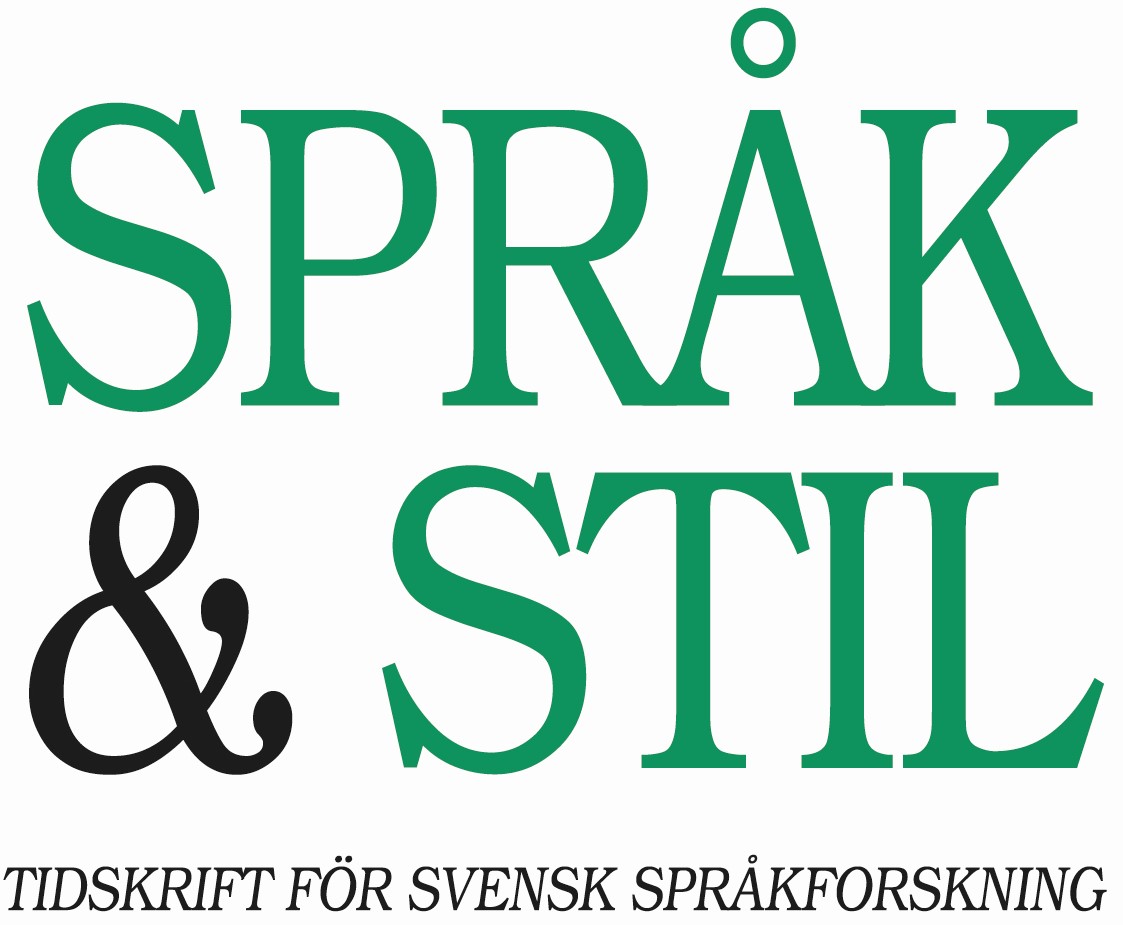Boost Your Brain. Om lexikal kreativitet i faktaböcker för barn i ett svensk-engelskt perspektiv
DOI:
https://doi.org/10.61965/sos.33.2023.18958Nyckelord:
translation, norms, children’s nonfiction, lexical creativity, wordplay, alliteration, metaphor, allusion, neologism, anthropomorphismAbstract
This study investigates the expression of lexical creativity in Swedish and English nonfiction books for children aged 3–12. The first part examines the pattern of lexical creativity in 14 nonfiction books, originally written in Swedish. In these books, simile, metaphor, anthropomor- phism, neologism and wordplay are the most common categories of lexical creativity, whereas alliteration, allusion and other creative expressions are much less frequent. These findings are compared with the expressions of lexical creativity in two English nonfiction children’s books of similar contents. Analysis reveals that one of the books, Moira Butterfield’s How Animals Build, has a pattern of lexical creativity much like that of the Swedish books. In the Swedish translation of this book, most of the lexical creativity is preserved. The other English book, General Knowledge Genius! by Chrisp et al., exhibits a non-target-like pattern of lexical creativity, resulting in a considerable loss of lexical creativity, in particular alliteration, in the Swedish translation. The article ends by discussing the main factors related to the neutralisation of lexical creativity in these books, namely divergent genre norms in the source and target cultures, target group adap- tation as well as the translator’s effort to maintain the stylistic level and coherence.
Referenser
Carroll, Lewis, 1871: Through the Looking-Glass and What Alice Found There. London: Macmillan.
Delabastita, Dirk, 1994: Focus on the Pun: Wordplay as a Special Problem in Translation Studies. I: Target 6(2). S. 223–243. DOI: https://doi.org/10.1075/target.6.2.07del
Delabastita, Dirk, 1996: Introduction. I: Dirk Delabastita (red.): Wordplay & Translation. Specialnummer av The Translator 2(2). S. 127–139. DOI: https://doi.org/10.1080/13556509.1996.10798970
Delabastita, Dirk, 1997. Introduction. I: Dirk Delabastita (red.): Traductio: Essays on Punning and Translation. Manchester/Namur: St Jerome and Presses Universitaires de Namur. S. 1–22.
Enström, Ingegerd, 2010: Ordens värld: Svenska ord – struktur och inlärning. Stockholm: Hallgren & Fallgren.
Epstein, B.J., 2012: Translating Expressive Language in Children’s Literature: Problems and Solutions. Oxford: Peter Lang. DOI: https://doi.org/10.3726/978-3-0353-0271-4
Goga, Nina, Hoem Iversen, Sarah & Teigland, Anne-Stefi (red.) 2021: Verbal and Visual Strategies in Nonfiction Picturebooks: Theoretical and Analytical Approaches. Oslo: Scandinavian University Press. DOI: https://doi.org/10.18261/9788215042459-2021
Klitgård, Ida, 2017: Wordplay and Translation. I: Kirsten Malmkjaer (red.): The Rout- ledge Handbook of Translation Studies and Linguistics. London/New York: Routledge. S. 233–248. DOI: https://doi.org/10.4324/9781315692845-16
Lathey, Gillian, 2016: Translating Children’s Literature. London: Routledge, Taylor & Francis Group. DOI: https://doi.org/10.4324/9781315753515
Laviosa, Sara. 2011: Universals. I: Mona Baker & Gabriela Saldanha (red.): Routledge
Encyclopedia of Translation Studies. Second edition. London/New York: Routledge. S. 306–310.
Leppihalme, Ritva, 1996: Caught in the Frame. A Target-Culture Viewpoint on Allusive Wordplay. I: Dirk Delabastita (red.): The Translator. Wordplay & Translation. I: Specialnummer av The Translator 2(2). S. 199–218. DOI: https://doi.org/10.1080/13556509.1996.10798974
Libris. Nationella bibliotekssystemet. Kungliga biblioteket. libris.kb.se [hämtad april 2023].
Lindqvist, Yvonne, 2005: Högt och lågt i skönlitterär översättning till svenska. Uppsala: Hallgren & Fallgren.
Marco, Josep, 2010: The translation of wordplay in literary texts. Typology, techniques and factors in a corpus of English-Catalan source text and target text segments. I: Target 22(2). S. 264–297. DOI: https://doi.org/10.1075/target.22.2.05mar
Masi, Silvia, 2021: Translating non-fiction picturebooks for children across age groups and languages. The case of informative books on geography in English and Italian. I: Translation Matters 3(2). S. 60–74. DOI: https://doi.org/10.21747/21844585/tm3_2a4
Mu Hai, Shi Ying, 2020: Metaphor Translation in the English Version of Bronze and Sunflower. I: International Journal of Applied Linguistics and Translation 6(3). S. 103–108. DOI: https://doi.org/10.11648/j.ijalt.20200603.18
Sanders, Joe Sutliff, 2018: A Literature of Questions. Nonfiction for the Critical Child. Minneapolis: University of Minnesota Press. DOI: https://doi.org/10.5749/j.ctt1pwt67w
Schröter, Thorsten, 2010: Language-play, Translation and Quality – with Examples from Dubbing and Subtitling. I: Delia Chiaro (red.): Translation, Humour and the Media. Vol. 2. London: Continuum. S. 138–152.
St. André, James, 2011. Metaphors for Translation. I: Yves Gambier & Luc van Doorslaer (red.): Handbook of Translation Studies Online. Volume 2. S. 84–87. DOI: https://doi.org/10.1075/hts.2.met1
Stålhammar, Mall, 1997: Metaforernas mönster. Stockholm: Carlsson.
Tucker, Max, utan år: Literary Devices: 30 Elements & Techniques for Writers (With Examples). Scribe Media. https://scribemedia.com/literary-devices/ [hämtad april 2023].
Weissbrod, Rachel, 1996: ‘Curiouser and Curiouser’: Hebrew Translation of Wordplay in Alice´s Adventures in Wonderland. I: Dirk Delabastita (red.): Wordplay & Translation. I: Specialnummer av The Translator 2(2). S. 219–234. DOI: https://doi.org/10.1080/13556509.1996.10798975
Publicerad
Nummer
Sektion
Licens

Det här verket är licensierat under en Creative Commons Erkännande 4.0 Internationell-licens.
Författare som bidrar till Språk & stil har givit sitt medgivande att publicera sina artiklar under en Creative Commons-licens (Creative Commons CC-BY 4.0), vilket ger tredje part rätt att kopiera och återdistribuera materialet i vilket medium eller format som helst. Det ger också tredje part rätt att bearbeta, förändra och vidareutveckla materialet för vilket syfte som helst, inklusive kommersiellt, på villkor att tydligt erkännande ges till verkets upphovsperson, att en länk till licensen tillhandahålls och att det tydliggörs om ändringar av verket har gjorts. Detta ska göras på skäligt vis, och får ej förespegla att licensgivaren godkänner tredje part eller vederbörandes användning av verket. Författaren/författarna behåller copyright till verket.



